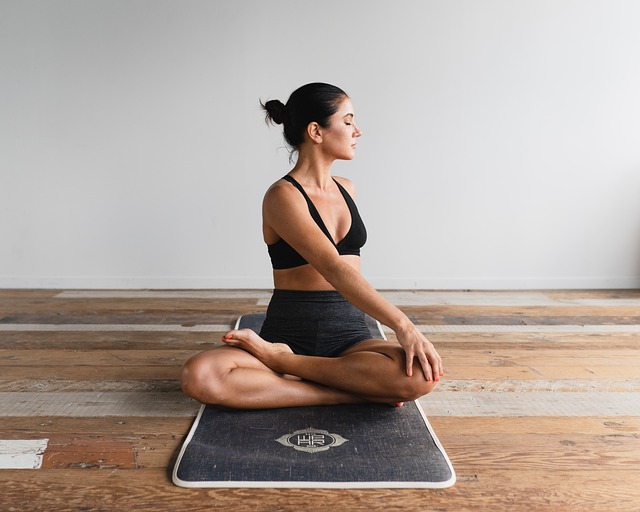We have listed some stretches you can do at work because our our bodies are designed to move, not sit in the same posture, for lengthy periods of time.
Sitting in front of a computer for a long period of time can be harmful to your health. This is especially true if you don’t have an optimal ergonomic setup (which most of us don’t) and sit in the same posture for hours on end. Back discomfort, headaches, tension, and stiffness in your back, neck, and shoulders can result from a lack of variation, as well as hunching the shoulders and sitting in an uncomfortable chair.
Stretching has been shown in studies to have numerous benefits, including the reduction of neck and shoulder pain. Also, standing and stretching breaks enhance productivity. Flexibility pauses let your eyes rest, and your entire body relax.
The Dangers of Sitting Too Long
Sitting for an extended period of time can harm your health in a variety of ways, including decreasing your lifespan.
A major research of 8,000 adults discovered that sitting for extended periods of time raised your risk of heart disease, cancer, diabetes, and even premature death. Furthermore, too much sitting, according to specialists, can cause back discomfort, neck pain, hip pain, and even shoulder pain. They also warn that sitting for lengthy periods of time contributes to weight gain and obesity.
Experts recommend moving for one to three minutes every 30 to 45 minutes—or at least for an hour—to help interrupt the pattern of extended sitting. Bottom line: you should try to sit less. This break can simply consist of standing at your work (or using a standing desk), taking brief walks, or performing the stretches listed below. This exercise not only relaxes your muscles and promotes circulation, but it also offers your mind a boost to help you stay focused.
The flexibility exercises listed below target the neck, back, shoulders, hips, and glutes. Perform them as often as possible, and you’ll feel less tension and possibly even increased productivity.
Set the alarm for every 45 to 55 minutes and do the stretches while you are at work.
- Each position should be held for at least 15 seconds.
- Exercises that produce pain or discomfort should be avoided.
- Do as many reps as you are able, and have fun!
Stretching the Chest
Because most of us spend so much of our time leaning forward, stretching your pectoral (chest) muscles and shoulders is essential. If you have shoulder pain, avoid this maneuver.
- Place your feet shoulder-width apart. You can also do this workout while sitting in a chair.
- Move your arms behind you and knot your fingers together if possible.
- Straighten your arms and gradually raise your hands a few inches above your head until you feel a stretch in your chest.
Maintain the position for 10 to 30 seconds.
5-10 times more.
You might also use a resistance band held overhead. Alternatively, place your forearms on either side of a doorway and gradually press forward until you feel a stretch in your chest.
The shrug of the Shoulders
Typing, clicking, and scrunching cause a lot of stress and tension in the shoulders and neck. In reality, most of us probably hunch much more than we know, tightening the trapezius and other shoulder muscles. Shoulder rolls and shrugs will start the blood flowing through your traps.
- Sit or stand up straight with your back straight and shoulders back.
- Squeeze the shoulders up towards the ears as hard as you can.
Hold for 1 to 2 seconds before rolling them back down.
A rep for 8 to 10 times.
Finish by rolling the shoulders forward and backward numerous times.
Stretch your upper back.
While shoulder shrugs improve circulation, this upper back stretch stretches the muscles between the shoulder blades, as well as the traps and shoulders.
- Begin in either a seated or standing position.
- Extend your arms straight out and rotate your hands such that your palms are facing apart from each other.
- Cross your arms so your palms are squeezed together, and clasp your fingers together. If twisting the arms is uncomfortable, simply tie the fingers together.
- Contract your abs and round your back, stretching away with your arms as you lower your head.
Instead of collapsing, envision yourself curving up and over an imagined ball.
For 10 to 30 seconds, hold the stretch.

Spine Twist
Long durations of sitting can also have an effect on the lower back, making it tense and achy. This twisting stretch will help to relieve some of the strain. Don’t overdo it—you simply need to rotate slightly to feel this stretch. Use this stretch, as well as other back exercises, to strengthen your core and stretch your lower body if you experience back pain.
- Begin by sitting with your feet flat on the floor.
- Squeeze your abs and rotate your torso to the right.
- To aid in deepening the stretch, place your hands on the seat of the chair.
- Just twist as much as you can comfortably while keeping your back straight and your hips square.
Hold for 10 to 30 seconds before repeating on the opposite side.
Repeat 5–10 times on each side.
Torso Flexion
Bad posture not only gives you a hunched-back appearance, but it can also cause back pain. This easy stretch stretches the muscles in your back, sides, and arms.
- Begin in either a seated or standing position.
- Lace your fingers together and reach toward the ceiling.
- Take a deep breath and stretch as far as you can.
- You can also stretch your sides by leaning to the right and left.
- Exhale, then open your arms and sweep them back down.
A rep for 8 to 10 times.
Forearm Stretch
You might not realize how stiff your forearms can become while typing until you stretch them. This easy practice stretches the muscles in the forearms and wrists, preventing hand and wrist pain.
- Begin in either a seated or standing position.
- Extend the right arm and turn the hand down so the fingers point to the floor.
- Pull the fingers towards you with your left hand, experiencing a stretch in your forearm.
Hold for 10 to 30 seconds before repeating with the opposite hand.
Repeat 5–10 times on each side.
Neck Extend
Tension in the neck can result in headaches and upper back strain. Many of us lean forward when we work on the computer. This puts extra strain on the neck muscles. Consider how much tension your neck is under when your head weighs up to 11 pounds. A neck massager can assist, but paying attention to your posture and performing this stretch can bring comfort.
- Begin by sitting up straight with your back straight and your shoulders back.
- Using your left hand, reach down and hold the side of the chair.
- Gently pull while turning your head to the right until you feel a stretch along the opposite side of your neck and shoulder.
Hold for 10 to 30 seconds before repeating on the opposite side.
Repeat 5–10 times on each side.
Stretch your hip flexors.
Sitting causes tightness in the lower body, particularly in the front part of the hips. When you are in a sitting position, the glutes stretch while the hip flexors shorten, resulting in tension. Stretching your hip flexors multiple times a day will help alleviate tension. It also gets you up and out of the chair, which provides immediate relief.
- Begin from a standing position.
- Take a couple of steps back with your right leg.
- In a lunge position, bend the back knee and descend both knees until you feel a stretch at the front part of your right hip.
- To deepen the stretch, squeeze the glutes of the rear leg.
Hold for 10 to 30 seconds before repeating on the opposite side.
Repeat 5–10 times on each side.

Hip Stretch While Sitting
This basic technique opens up the hips, allowing the complicated network of muscles in the hips and glutes to expand. It’s wonderful after a long day of sitting. If this move irritates your knees, skip it.
- Cross the left ankle over the right knee and sit up tall in a sitting position.
- Lean forward gently, keeping your back straight and extending out with your torso until you feel a stretch in the left hip and glute.
- To deepen the stretch, press down on the left knee.
Hold for 10 to 30 seconds before repeating on the opposite side.
Repeat 5–10 times on each side.
Stretch your inner thighs.
Inner thigh stretches are beneficial to the hips and groin. This practice builds on the previous one by expanding the hips and releasing tightness and tension in the lower body.
- Sitting, spread your legs wide, toes out, and lean forward with your elbows on your thighs.
- Maintain a straight back and clenched abs.
- Slowly press forward while pushing the thighs out with your elbows until you feel that stretching sensation in the inner thighs.
Hold for 10 to 30 seconds and then repeat as desired.
To Conclude
If your job requires you to sit in the same position for a long time it can lead to discomfort and even pain in your back and neck. Additionally, it can increase the risk of heart disease, cancer, and diabetes.
Make an attempt to incorporate more movement throughout the day, such as stretches and standing, with doctors recommending at least a couple of minutes of movement every 30 to 45 minutes.
These ten stretches may be done at your desk to help loosen up your muscles, enhance circulation, and preserve your flexibility. In order to have a well-rounded training regimen, incorporate the stretches into your normal exercise program.

